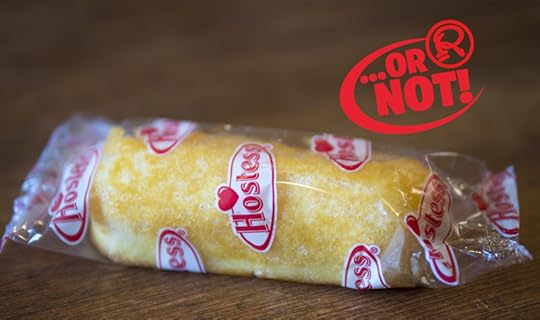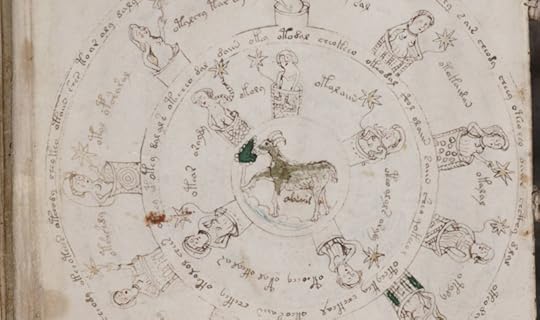Ripley Entertainment Inc.'s Blog, page 363
February 9, 2018
CARTOON 02-09-2018
February 8, 2018
Twinkies Aren’t the Immortal Snack Cakes You Think They Are
Featured in Ripley's Believe It or Not!

Or Not
In today’s world many misconceptions have been perpetuated—becoming modern day “facts”—when, in reality, myths and hearsay have taken over. Sorry to burst your bubble, but in this weekly column, Ripley’s puts those delusions to the test, turning your world upside down, because you can’t always…Believe It!
Today: Twinkies don’t last forever.
Twinkies
Twinkies do expire. Despite countless rumors, legends, and hear-say, these cream-filled sponge cakes will not outlast humanity in an apocalypse. Far from the ferocity of nuclear fallout, Hostess—the company that makes Twinkies—only promises 25 days of freshness sitting on air-conditioned store shelves.
That 25-day window may seem suspect, but who would know the product better than its manufacturer. That said, researchers have long disputed the accuracy of “sell by” dates as either untested or a ploy to get consumers to repurchase food stocks more quickly.

Note the expiration date in the bottom right.
The Myth
While most of us are familiar with the longevity of Twinkies being infinite, the original Twinkie myth is steeped in conspiracy overtones. Some versions claim that Hostess hasn’t even made Twinkies since they first launched in 1930, and that they simply refresh their packaging once in a while to keep selling them.
Believe it or not, the biggest existential threat to Twinkies—besides people’s appetites—has been the viability of Hostess. On November 12, 2012, Twinkie production halted as Hostess filed for chapter 11 bankruptcy. The company would eventually start production again, but for eight months, no new Twinkies hit American shelves.
Ingredients
If a Twinkie has a shelf life, then there surely must be an ingredient holding the fluff-engorged snack cake back from immortality.
There are 37 ingredients listed on a Twinkie’s product label. Flour, water, egg, beef shortening, and sugar make up the basics of what a Twinkie is—or how you could make one yourself—but the rest is an amalgam of chemicals or alternatives of our base ingredients.

Five different kinds of sugar, including ubiquitous corn syrup, sweeten the cake and fluff, but the rest of the nearly unpronounceable substances are preservatives and stabilizers.
The way we see it, there are two weak links in the Twinkie formula: beef fat and egg. These two ingredients are the most likely to cause spoilage. The beef fat, which makes up the cream filling, could go rancid and the egg in the cake could rot.
The Limits of Preservatives
While 25 days may seem like a short shelf life compared to eternity, it’s actually quite a lot for a baked good. By containing no dairy and being sealed in cellophane, Twinkies do maintain their freshness for quite a long time, but the limits of preservatives like sorbic acid are limited.
Many curious consumers have bought Twinkies and waited to see what happened to them as they aged. Most report that after the first month they become much less appetizing, as the outer cake hardens.
While some sealed products have been kept for eight years without visible spoilage, snack cakes left out of the wrapper do attract mold. Despite this, the rumor of Twinkie’s invincibility has made it so moldy Twinkies have taken the media by storm when they appear on sites like eBay.
Source: Twinkies Aren’t the Immortal Snack Cakes You Think They Are
CARTOON 02-08-2018
February 7, 2018
The 1930s Kayak Journey from Germany to Australia
Featured in Ripley's Believe It or Not!

Born just before the outbreak of World War I and growing up in the impoverished Wymar Republic, Oskar Speck was dissatisfied with the winds of fate in Germany. In 1933, he set his folding kayak in the Danube River and paddled south for Cyprus in the Mediterranean Sea. Eventually, he would extend his voyage all the way to Australia, becoming a daring adventurer.

CC Ironie
To the Copper Mines
Just days into his journey, Speck had spent all his money carousing in riverside towns and was flat broke. He managed to get some money from family but had to resort to begging a few days later. Speck’s original intent was to strike it rich in the copper mines of Cyprus, but after experiencing the thrill of adventure, he couldn’t stop.

Denied access through the Suez Canal, he carried his boat overland to the Euphrates river. Speck loathed the Euphrates river. Dining for days at a time on dates, the German explorer was out of his depth. Food was scarce, nobody spoke German, and he was shot at many times through this leg of the journey. When a storm swept the river, he was shipwrecked on a tiny island alongside a corpse, as if warning Speck of what could be.
Hero in India
His time in Iraq hardened Speck into the gallant figure of human tenacity he would be appreciated for in India, which was still under the rule of British Imperials. Englishman found romance in Speck’s mission, receiving him as an honored guest and financially supporting him for much of his journey.
Forced to camp in mosquito and crocodile-infested mangroves most of the time, the lavish palaces and homes of governors were a welcome reprieve. He would spend weeks alone—scavenging food and tirelessly paddling—only to find himself surrounded by high-society, dancing and swilling fine scotch.

Hardships
Though he had seen his things stolen, destroyed, and even contracted malaria in the first half of his voyage, the latter half—through the Dutch-controlled Indies—would prove the most challenging. As he paddled away from English-controlled India, so was Germany back home moving away from the good graces of Europe. The Dutch were much less approving of Speck’s journey, and saw him as a burden, requiring constant food and medical care.

His interactions with natives also became strained. He struggled to grasp the subtleties of their economies and balanced precariously on their tempers. Though he was sometimes treated as a God, he was also beaten and robbed. Despite his long journey, Speck had also never learned to swim, putting him in increasing danger as the trip progressed.
Last Leg
Lost along the remote coast of Papua New Guinea where the mail couldn’t reach him, the many backers he had accrued stopped sending money, thinking he was dead. His family also implored him to return home. The German economy was booming, and he had no reason to finish his “silly adventure.” The Nazi Party, on the other hand, encouraged his travels. They saw his voyage as a demonstration of Aryan superiority.

Eventually, he reached the coast of Australia. Officials met him at sea and warned him he would be arrested on suspicion of spying. What better cover than a lone kayaker reporting settlement positions back to Germany? They allowed him to paddle to shore himself and complete his mission, but he was placed in an internment camp until the end of the war.
CARTOON 02-07-2018
February 6, 2018
Can You Break the Code of the Mysterious 15th-Century Voynich Manuscript?
Featured in Ripley's Believe It or Not!

In 1639, Georg Baresch, an alchemist from Prague, revealed to the world a mystery that was recently dated to have existed as far back at the 15th century: A 240 page indecipherable manuscript of unknown origin.
In a letter, Baresch wrote to Jesuit scholar Athanasius Kircher, who claimed to have deciphered Egyptian hieroglyphics, and asked him if he might be able to untangle the book’s mysterious language. That letter would begin the book’s journey across time, countries, and hands, eventually landing on the desk of Polish book dealer Wilfrid Voynich in 1912. It would henceforth be known as the Voynich Manuscript.

Puzzling Pages
The manuscript, comprised of various texts and illustrations, was originally believed to have been made up of 272 pages. Now down to 240 pages (depending on how some of the fold-out pages are accounted for), the book appears to be broken down into seven sections: Botanical, astronomical, cosmological, zodiac, biological, pharmaceutical, and recipes.
Various theories exist about the unknown language used within the manuscript. The most popular theory is that the book was written in a substitution cipher, a method of obscuring text by replacing it with a substitute letter or letters. Even with this theory in place, the text remains indecipherable.
Still, other theories about the book’s language abound, running the gamut of being written in code, shorthand, or even a sort of natural language. Much like the substitution cipher theory, none of the less popular theories have come any closer to unraveling this mysterious text.

Every picture tells a story.
Then there are the equally intriguing illustrations that make up a good portion of the book…
Because the text is indecipherable, modern scholars use these illustrations to define the seven sections of the manuscript. Filled largely with detailed drawings of plants, herbs, and roots, the book also appears to delve into the astronomical, with images of what appear to be diagrams of the zodiac.
The book also contains several nudes, illustrations of women in what appears to be a communal bath, as well as some sort of intricate shower.

How far down the rabbit hole do you want to go?
So, what’s the real meaning behind the book? What are its true intentions? Is it merely the ramblings of an autistic monk as physicist Andreas Schinner believes? Or does the book have a deeper, darker purpose?
Noted conspiracy theorist Dan Burisch believes the Voynich Manuscript contains the description of how to use alien technology from the future for creating DNA with sound.
Could it simply be as mundane as a self-help book for living well, as the majority of scholars believe it to be?
Whatever its original intent, the true purpose of the Voynich Manuscript may never be revealed.
By Jesse Gormley, contributor for Ripleys.com.
Source: Can You Break the Code of the Mysterious 15th-Century Voynich Manuscript?
CARTOON 02-06-2018
February 5, 2018
Everything You [Don’t] Need to Know About Flea Circuses
Featured in Ripley's Believe It or Not!

Is your head buzzing trying to figure out what exactly is a flea circus?
Flea circuses have been entertaining audiences for centuries. As one of the strangest circus attractions we’ve come across, here’s everything you’ve ever wanted to know about the Big Top with the tiniest performers.

Wait, what exactly is a flea circus?

A flea circus is a miniature sideshow spectacle in which fleas perform (or appear to perform) tricks, including tightrope walks, Ferris Wheel spinning, chariot pulling, and jumping hoops.
The use of fleas as entertainment can be traced all the way back to 1578 when watchmaker Mark Scaliot attached a tiny chain and leash to a flea to show off his craftsmanship. Anyone who could make a metal chain for a flea could surely be trusted to look after a fine metal watch!
The first flea circus is credited to Louis Bertolotto. He opened the ‘Exhibition of the Industrious Fleas’ in the 1830s, putting the flea circus on the map, with performances in London, New York, and Canada. His shows reflected the popular culture of the time, with one show even referencing Napoleon!
Although the flea circus has waned in popularity, one can still be found each year at the Oktoberfest celebrations in Munich. It is celebrated as the world’s last remaining flea circus!

CC Osien via Flickr
Why put fleas in a circus?
Fleas were chosen due to their prevalence in the world, more so in the 1800’s than now. Quick to reproduce and cheap to feed, fleas were an easy creature to come by. They also provide a ‘shock value’, as a creature not well-loved by the world. Their tiny size also meant that a circus could be created for them on a miniature scale, which delighted audiences at the time.
There are more than 2,000 species of flea in the world, although the species used for circuses was almost always the human flea, Pulex irritans. Let’s hope circus-goers didn’t get too close to the performers!

Can they be taught to do tricks?
The jury is still out on this one, but the consensus seems to be that fleas are not capable of learning tricks or being taught skills. To overcome this, circuses resorted to several workarounds.
Fleas are known for their ability to jump, and live fleas were sometimes placed into tiny harnesses to keep them contained within the circus. Their natural jumping behavior could then be interpreted by the audience as a ‘trick’. By placing objects near the flea, such as a ball, the flea could then ‘push’ or move it. With no one to regulate the welfare of the fleas, glue was also used to fasten them to the attraction!
Some circuses even used dead fleas, dressing them up in teeny-tiny costumes and gluing or fastening the buggers to ropes.
How do I know the fleas are real, they’re so tiny!
Some enterprising circus owners (who didn’t have the passion for tracking down live fleas) used illusions, relying on magnetic and electrical contraptions. This trickery created movement in the attractions, allowing audiences to believe a trained flea was moving balls, jumping from a high dive, or riding a miniature carriage.
By Katie Dundas, contributor for Ripleys.com.
Source: Everything You [Don’t] Need to Know About Flea Circuses
CARTOON 02-05-2018
February 4, 2018
CARTOON 02-04-2018
Ripley Entertainment Inc.'s Blog
- Ripley Entertainment Inc.'s profile
- 52 followers









